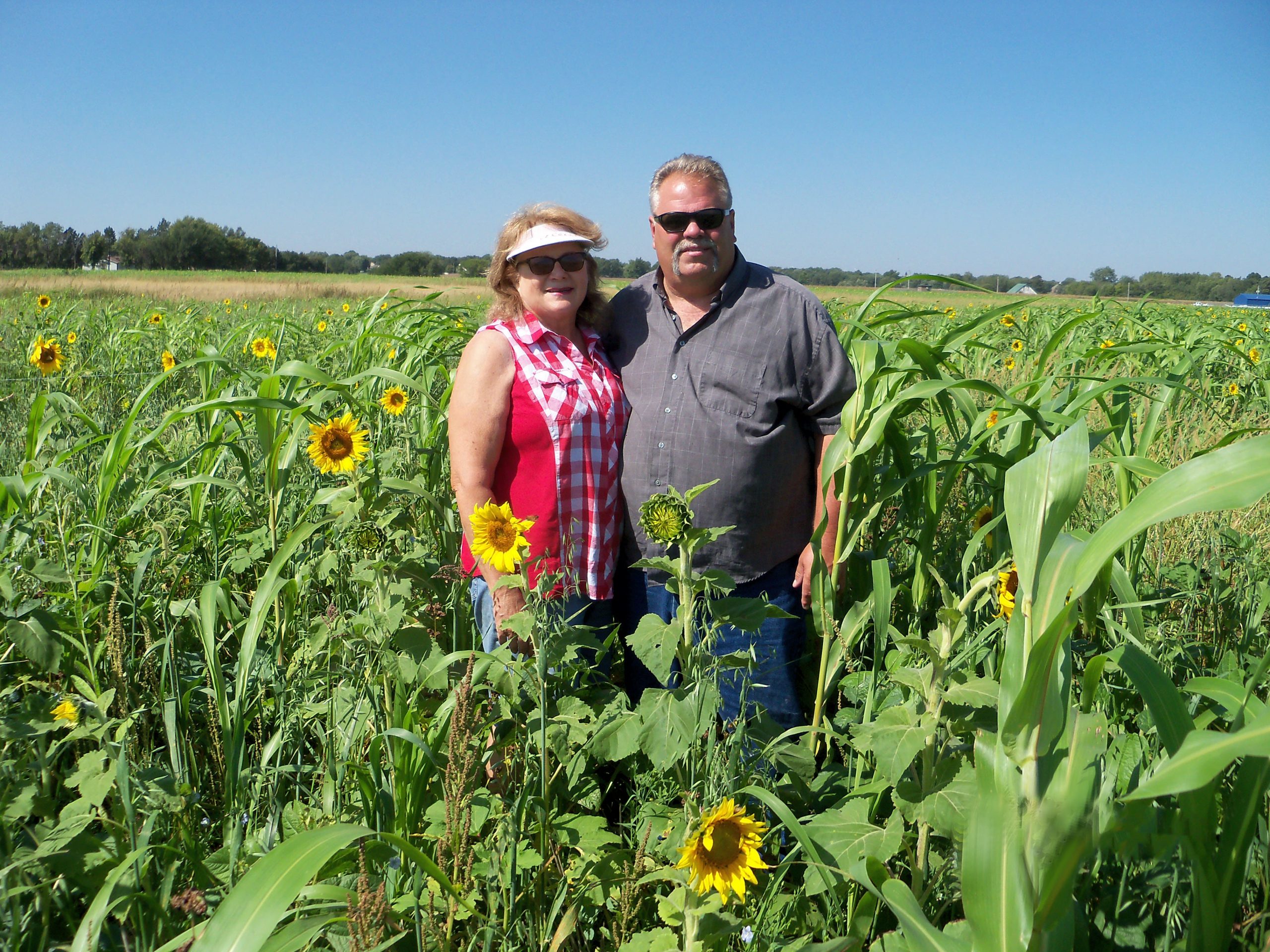Many Midwest farms are struggling with low grain prices and the trade war with China, among other challenges. But a small farm in Nebraska offers farmers hope that a focus on soil health can help their farms prosper, while delivering a range of environmental benefits and even a solution to climate change.
Scott Gonnerman’s farm in Waco, Nebraska has been in his family since 1918 when his great grandfather bought it. It is small by Midwest standards, just 160 acres. Gonnerman rents two other parcels, giving him a total of 250 acres.
He grows non-GMO corn, soybeans, and small grains such as wheat.
“We’re awfully small in today’s scale, but we seem to be able to make a living farming,” he says.
Switched to no-till and cover crops
Gonnerman’s journey as a regenerative farmer began in 2008 when he switched to no-till farming, which leaves the soil undisturbed.
“We went to a couple no-till meetings and decided that was what we needed to do,” he says.
A year later he started planting a cover crop after realizing the importance of crop diversity. He initially planted an annual ryegrass to improve soil health. In 2010, he planted multi-species cover crops.
Today, Gonnerman plants 14 to 17 different varieties of cover crops. These include hemp, crimson clover, Austrian winter peas, hairy vetch, pearl millet, sorghum sudangrass, oats, radishes, and others.
The cover crops perform different functions to build soil health. Oats build biomass to protect the soil, sorghum sudangrass promotes the growth of beneficial mycorrhizal fungi, tillage radish helps break up compacted soil, and Austrian winter peas add nitrogen, an essential nutrient.
Planting cover crops has delivered many benefits to Gonnerman’s farm. They prevent soil erosion, increase water infiltration, suppress weeds, and reduce the need for chemical inputs. Gonnerman has eliminated the use of insecticides and fungicides.
He still uses an herbicide to “burn down” a cover crop in the spring but has been trying to use a roller crimper to mow them down instead.
Gonnerman has also reduced his use of nitrogen fertilizer to 50% of the recommended amount for corn.
“They say it takes a pound of nitrogen to raise a bushel of corn, but our best year was 2.75 bushels of corn per pound of nitrogen applied. I’m raising 200 bushels of corn on 80 to 100 pounds of nitrogen,” he says.
Because of his success reducing chemical inputs, Gonnerman plans to take the next step, which is transitioning to organic production.
“This spring, I’m going to planting alfalfa and keep it for three to four years, then that ground will be organic. That’ll give me three to four years to figure out an (organic) crop rotation.”
The alfalfa will help control weeds and provide nitrogen for corn.
Better water infiltration
One of the biggest benefits Gonnerman has seen from cover crops is the ability of his soil to absorb water. In 2008, water was absorbed into his soil at a rate of one-half inch per hour. By 2019, that rate improved to two inches in less than two minutes. His soil soaks up water like a sponge.
Even with the heavy rains that Nebraska saw last year, Gonnerman’s farm was able to absorb it.
“We’ve had no runoff on our farm. I can soak it up,” he says.
Better water absorption also reduces the need for irrigation, which is common in Nebraska.
“With our water infiltration rates, our cover crops, and keeping the ground covered, we’ve basically eliminated a majority of our irrigation needs.”
Gonnerman grows only non-GMO corn and soybeans. “In 2013, we became 100% non-GMO with no insecticide, no fungicide, and no seed treatments.”
He grows non-GMO soybeans for a seed company and food-grade soybeans for Gavilon Grain, which are sold to the Japanese market. This year he will also grow non-GMO white corn for Gavilon.
Gonnerman slashes his costs by buying non-GMO corn and soybean seed.
“I pay $85 a bag for corn. If you buy a Pioneer fully traited (GMO) corn, it’s probably $300 or more per bag.”
Soil health as the bottom line
By reducing seed and other input costs for pesticides and fertilizers, Gonnerman’s farm is profitable, unlike many other farms in the Midwest.
“My wife and I are pretty much making a living off of our farm,” he says. “Our input costs are down considerably. Our profitability per acre is up.”
But the bottom line for Gonnerman is soil health.
“Everything on our farm is based on what it will do for our soil. Will it benefit it, keep it the same, or degrade it? For all our farming decisions, soil health comes first,” he says.
Gonnerman’s soil health focus was recognized in 2018 when he received the Master Conservationist Award from the Omaha World-Herald.
He wants to leave a legacy of soil health to his future generations.
“I’m 59 years old, and my goal is to have my soils functioning the way they were when my great-grandfather bought the farm back in 1918. I’m trying to make it so that, some year down the road, my grandsons can make a living off my 160 acres.”





